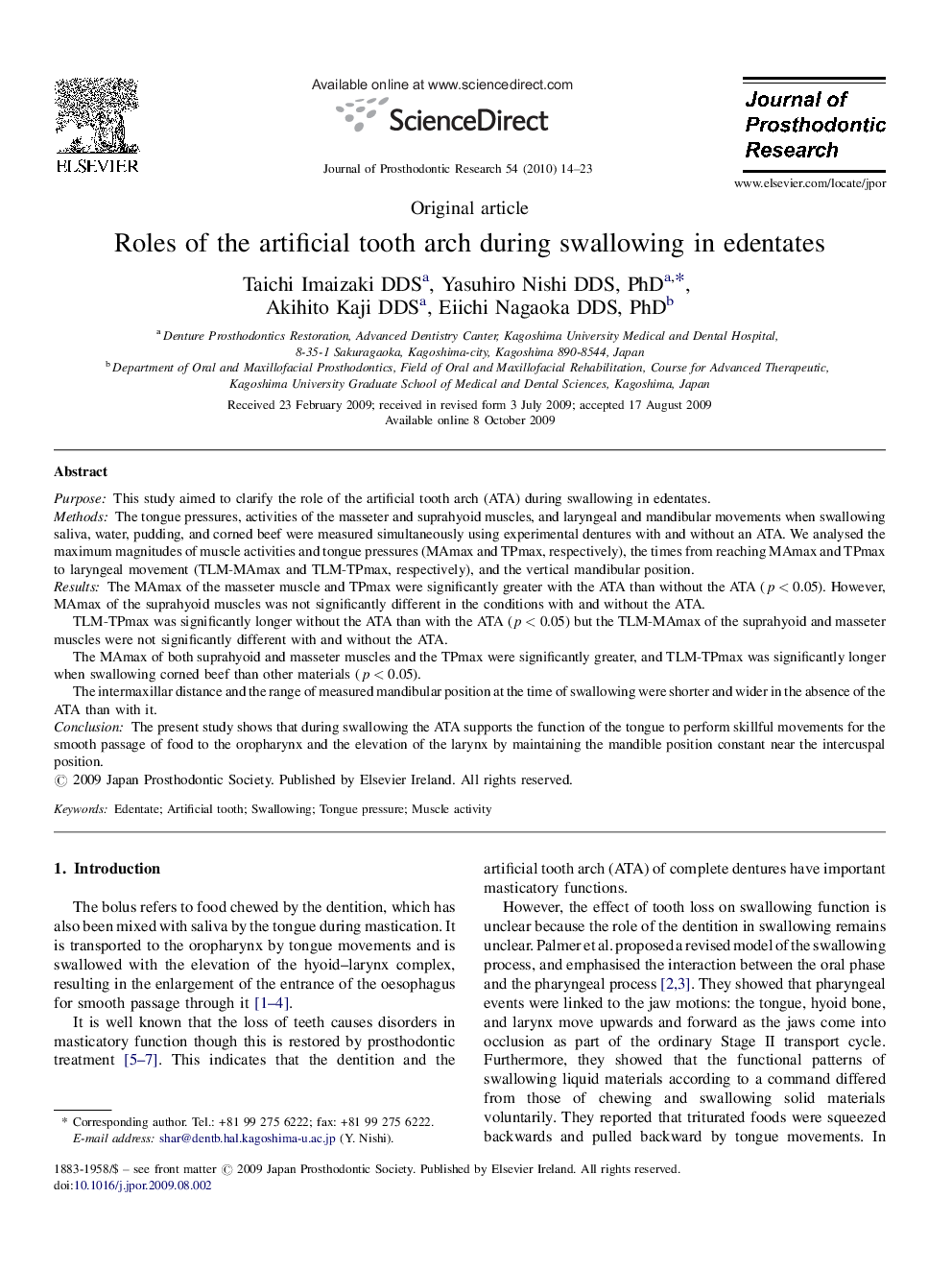| Article ID | Journal | Published Year | Pages | File Type |
|---|---|---|---|---|
| 3160712 | Journal of Prosthodontic Research | 2010 | 10 Pages |
PurposeThis study aimed to clarify the role of the artificial tooth arch (ATA) during swallowing in edentates.MethodsThe tongue pressures, activities of the masseter and suprahyoid muscles, and laryngeal and mandibular movements when swallowing saliva, water, pudding, and corned beef were measured simultaneously using experimental dentures with and without an ATA. We analysed the maximum magnitudes of muscle activities and tongue pressures (MAmax and TPmax, respectively), the times from reaching MAmax and TPmax to laryngeal movement (TLM-MAmax and TLM-TPmax, respectively), and the vertical mandibular position.ResultsThe MAmax of the masseter muscle and TPmax were significantly greater with the ATA than without the ATA (p < 0.05). However, MAmax of the suprahyoid muscles was not significantly different in the conditions with and without the ATA.TLM-TPmax was significantly longer without the ATA than with the ATA (p < 0.05) but the TLM-MAmax of the suprahyoid and masseter muscles were not significantly different with and without the ATA.The MAmax of both suprahyoid and masseter muscles and the TPmax were significantly greater, and TLM-TPmax was significantly longer when swallowing corned beef than other materials (p < 0.05).The intermaxillar distance and the range of measured mandibular position at the time of swallowing were shorter and wider in the absence of the ATA than with it.ConclusionThe present study shows that during swallowing the ATA supports the function of the tongue to perform skillful movements for the smooth passage of food to the oropharynx and the elevation of the larynx by maintaining the mandible position constant near the intercuspal position.
